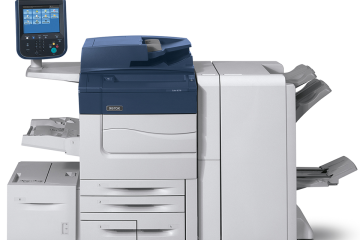Did you know that printing has a significant environmental impact? While we may not think twice about hitting the print button, the process of printing consumes energy, produces waste, and contributes to deforestation. The environmental consequences of printing are something we should all be aware of and take steps to minimize.
In today’s digital age, where information is readily available at our fingertips, it’s crucial to consider the environmental implications of printing. With the rise of e-books, online magazines, and digital documents, it’s easier than ever to reduce our reliance on printed materials. By understanding the environmental impact of printing and making conscious choices, we can contribute to a greener and more sustainable future.
In this article, we will delve into the various aspects of printing that have an environmental impact. From the production of paper and ink to the energy consumption of printers, we will explore the ways in which printing contributes to climate change and deforestation. Additionally, we will discuss practical steps that individuals and businesses can take to reduce their printing footprint and embrace more sustainable alternatives.
The Future Of Print Industry & Environment
The future of the printing industry is inextricably linked to its environmental impact. As society becomes more conscious of its carbon footprint and the need for sustainability, it is imperative for the print industry to adapt and mitigate its environmental effects. From the production of paper to the usage of printers and ink solvents, each stage of the print process has the potential to have a significant environmental cost.
However, there are also opportunities for positive impact, such as using renewable resources, reducing greenhouse gas emissions, and embracing eco-friendly practices. By making conscious choices, the print industry can work towards a more sustainable future while still meeting the demands of consumers and businesses.
Renewable Resources & Positive Impacts
Renewable resources play a crucial role in reducing the environmental impact of the printing industry. By adopting eco-friendly alternatives, such as recycled paper and vegetable oil-based inks, the industry can significantly minimize its negative effects on the environment.
One of the key positive impacts of using renewable resources is the reduction in greenhouse gas emissions. The production of paper and ink traditionally involves the release of carbon dioxide and other harmful gases. However, by embracing renewable energy sources like solar and wind power, the printing industry can significantly decrease its carbon footprint and contribute to a sustainable future.
Recycled paper is a prime example of a renewable material that positively impacts the environment. By diverting paper waste from landfills and reducing the demand for new paper production, it helps conserve natural resources and reduces energy consumption. Additionally, vegetable oil-based inks offer a greener alternative to traditional ink solvents. Made from renewable resources, such inks minimize the emission of toxic chemicals and reduce the industry’s environmental cost.
Carbon Neutrality Or Eco-Friendly Printing Practices
Carbon neutrality is a concept that aims to balance the amount of carbon dioxide released into the atmosphere with an equivalent amount being removed or offset. In the context of the printing industry, becoming carbon neutral involves implementing various eco-friendly practices that reduce the environmental impact of printing.
One key practice is the use of vegetable oil-based inks. These inks are made from renewable resources and emit fewer toxic chemicals compared to traditional ink solvents. By using vegetable oil-based inks, the industry can minimize its carbon footprint and contribute to a more sustainable future.
Energy-efficient machinery is another important aspect of eco-friendly printing. By utilizing energy-efficient printers and equipment, the industry can significantly reduce its energy consumption and, subsequently, its carbon emissions. This not only helps to lessen the environmental impact of printing but also results in cost savings for print businesses.
Recycling Paper And Reducing Consumption/Usage
Recycling paper and reducing paper consumption play crucial roles in mitigating the environmental impacts of paper usage. Implementing these strategies not only conserves natural resources but also helps minimize waste generation and the release of harmful greenhouse gases.
The process of recycling paper typically involves several steps. First, paper is collected from various sources such as offices, schools, and households. Then, it is sorted and shredded to break it into small pieces. Next, the paper is pulped and mixed with water to form a slurry. During this stage, inks and contaminants are removed through a rinsing process. Finally, the clean pulp is turned into new paper products.
One of the significant negative environmental impacts of paper waste is the emission of methane and carbon dioxide. Methane, a potent greenhouse gas, is released when paper waste decomposes in landfills. Additionally, the production of new paper from virgin materials contributes to deforestation and increases carbon dioxide emissions.
To reduce paper consumption, businesses and individuals can adopt various methods. Implementing digital solutions, such as electronic communication and document management systems, can minimize the need for printing. Encouraging double-sided printing and using smaller fonts and narrow margins can also reduce paper usage significantly.
United States Trends And Regulations
In the United States, there are several current trends and regulations aimed at addressing the environmental impact of printing. These initiatives are particularly important considering that the law industry, as the highest consumer of printing paper, significantly contributes to this impact.
One important trend is the increasing demand for eco-friendly paper and printing practices. Many businesses and individuals are seeking paper products that are made from recycled materials and manufactured using energy-efficient processes. This trend has led to the development of certifications and labeling programs that help consumers identify environmentally responsible paper products.
In terms of regulations, the printing industry is subject to several standards and codes under the North American Industry Classification System (NAICS). The applicable codes include 32311 for printing and related support activities, 54143 for graphic design services, and 54151 for computer systems design and related services.
Furthermore, the National Emission Standards for Hazardous Air Pollutants (NESHAP) and New Source Performance Standards (NSPS) are applicable to printing and publishing. These regulations aim to control emissions of volatile organic compounds (VOCs), hazardous air pollutants (HAPs), and other pollutants that can have a detrimental impact on air quality and human health.
To comply with these regulations and minimize environmental impact, printing companies are adopting various strategies. These include the use of vegetable oil-based inks instead of toxic chemicals, implementing energy-efficient printing processes, and investing in water-based inks that reduce air pollution.

Conclusion
In conclusion, it is clear that printing has a significant environmental impact. From the consumption of natural resources like trees and water to the emission of greenhouse gases and toxic chemicals, the printing industry contributes to environmental degradation. However, there are steps that can be taken to mitigate these impacts.


